Finca Chafariz in Tabayesco sits in a unique island; in fact, but for the three large touristical centres (Costa Teguise, Puerto del Carmen and Playa Blanca), this Canarian island is completely authentic. But even there the coasts are not completely built up with holiday apartements such as at Tenerife or Gran Canaria and with a few exceptions, there are no highrise hotels. For a large part we owe this fact to the vision and influence of artist/architect/environmentalist César Manrique, born on Lanzarote. As early as the seventies of the previous century he managed succesfully to convince the island administration that respect for nature and making a couple of laws to regulate building, would be paramount to preserve the island's unique character.
Among other things, he claimed houses should be white, window sills should be green or blue (brown was admitted later because that is the natural colour of the wood used), and moreover, that buildings should never exceed four floors. Simple dogmas that have made Lanzarote into an island that has managed to keep close to its origin: unique nature, splendid beaches each of which with a character of its own, authentic fishing villages and then, which makes Lanzarote stand out from all the other Canary islands, its specatacular volcanic landscape ... Lanzarote is the most versatile island of the Canarian archipelago.
By showing you lots of (fullsize) pictures we would like to give you a taste of the north of Lanzarote - no, don't think that in winter it's suffering from the rain and cold that can strike the north of Tenerife or the centre of Gran Canaria. The north east of Lanzarote is sunny, also in winter, because of the of the fact that the highest mountains in the northwest are only 600 meters or so (compared to the 2,200 at Gran Canaria or 3,700 meters at Tenerife). Plus, the wind is concentrated on the west side of the island.
But first, out of respect for the legacy Manrique has left behind for this island, 6 highlights that show that volcans, Lanzarote and Manrique make an irresistable package.
César Manrique, (born April 24, 1919 in Arrecife, Lanzarote, † September 25, 1992 in Tahíche, Lanzarote) was a Spanish architect, painter, sculptor and environmentalist on the Canary Island of Lanzarote, which has decisively shaped the image of the volcanic island. He was responsible for mass tourism in Lanzarote would be avoided. He campaigned to preserve the scenic and cultural identity of his home island, which is why the island government posthumously proclaimed him the island's favourite son in September 1995, expressing its gratitude for the artist's lifetime achievement. At the same time, the island government followed Manriques advice.
For example, he was of his opinion that houses should be white, the window frames or green or blue, possibly brown, and that no more than four floors should be built. A simple dogma that has made Lanzarote an island that has kept its origins: unique nature, beautiful beaches, each with its own character, authentic fishing villages and then this spectacular volcanic landscape ... Lanzarote has it all.
Let's start with a literal high: Mirador del Rio, 25 minutes from Finca Chafariz.
It used to be a point where there were cannons to try and stop the pirates. Pirates used to be an immense problem to the Lanzarote population. Manrique's idea was to hide this viewpoint from the road leading to it. Driving to the entrance you absolutely have no idea that this wall you are looking at is hiding one of the most spectacular views of the entire archipelago. You see La Graciosa, the islands behind it, a toy-like ferry going to and fro the harbour of Caleta de Sebo and in the south you are looking at Caleta de Famara or even beyond.
The restaurant has huge windows, a Manrique trademark, the ceiling has a steel mobile that should improve acoustics. Should. One floor up there is a shop, offering a proper selection of souvenirs, maps and guides.
• In every detail Manrique's signature can be found back
• Wait for a sunny day, some clouds are alright
• It can be quite windy on the terraces
• The direct surroundings around Yé and the route along the coast with stunning views are really worthwhile
• Buy combined-tickets for the Cuevas de los Verdes & the Jameos de Agua & the Mirador del Rio (or more Manrique-related sights) to save money
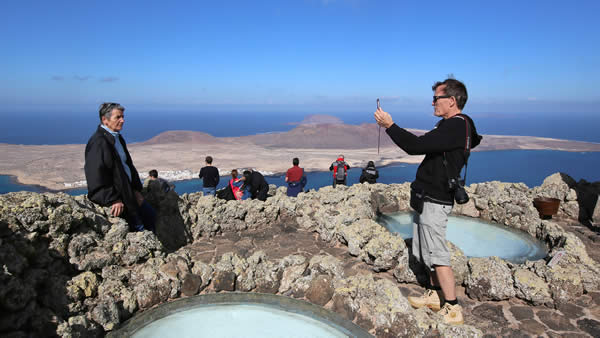
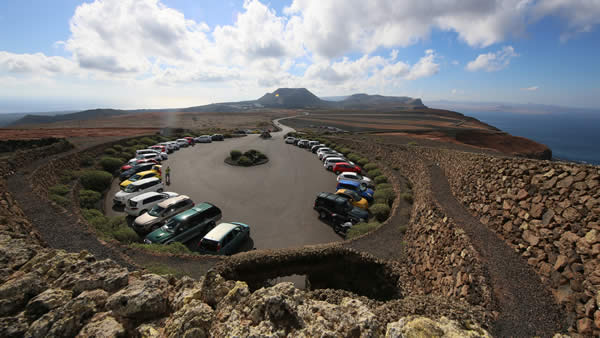
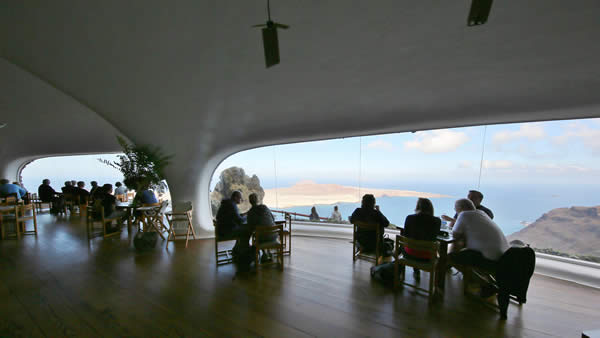
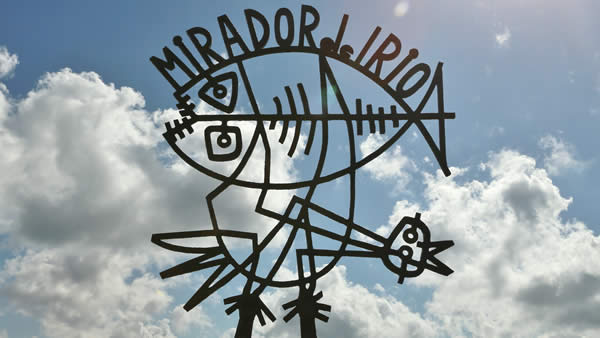
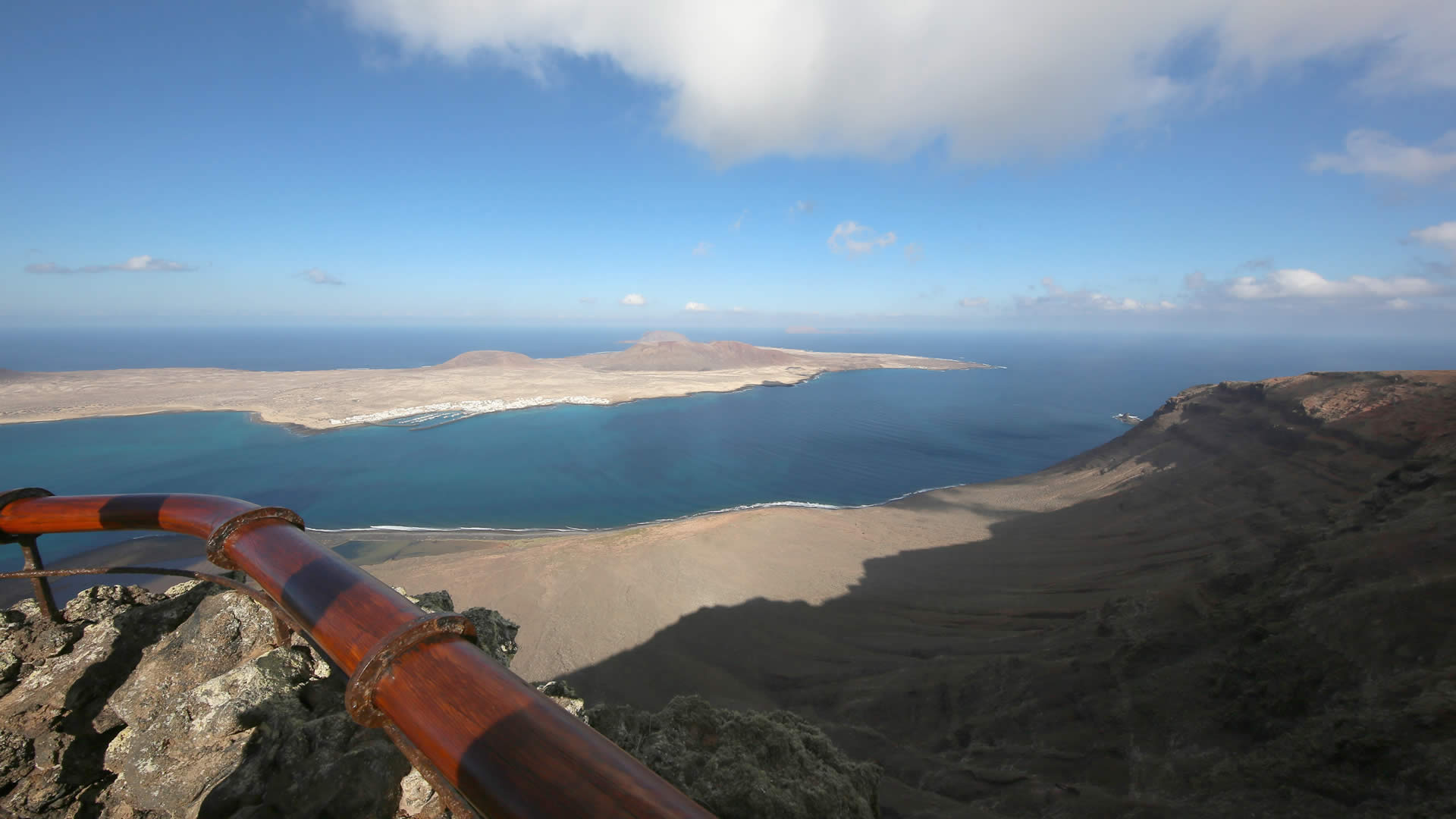
At less than a 15 minutes' drive you will find one of the largest cavern systems in the world. The caves are not of the dripstone type, but the corridors and rooms existed after an enormous eruption of the Corona volcano approximately 5,000 years ago (some sources claim that was as far back as 10,000 years).
Anyway, for years and years there was a thick layer of lava finding itself a way downhill towards the coastline. The topmost lava started to cool off first and clotted. The warmer lava below it kept moving on downwards, however. When the flow had finally stopped a six-mile corridor had been created underground, connecting large rooms.
Only a relatively small part of it - with beautiful lighting - has been opened to the public. There's a guide that accompanies small groups of tourists every half hour or so and gives more information on the origins in Spanish and in English.
• In summer the caves are cooler than outside, but temperatures never drop below 18 degrees C
• Unsuitable for small children and people who are less mobile (there's quite a bit of bending and negotiating narrow stairs)
• At times there is a classical concerto in the large hall, the acoustics are overwhelming
• But for toilets at the entrance there are no amenities
• Discounts after 15.00 hrs and short waiting times
• Cueva de los Verdes also participates in the combined-ticket offer
• Hint for better pictures: it is dark, nevertheless switch off your flash and try to find a stable spot to rest your arm om or use a tabletop tripod
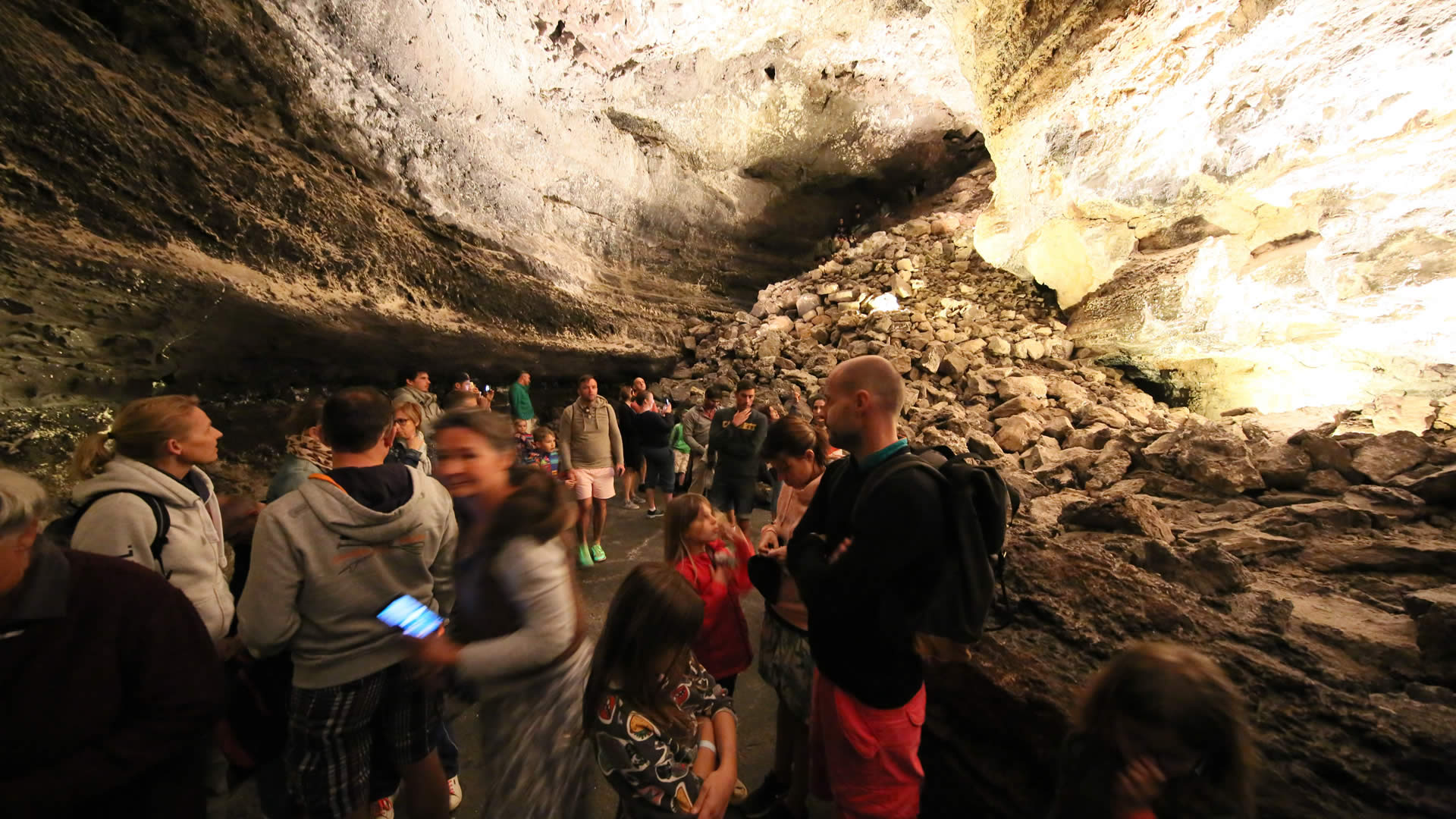
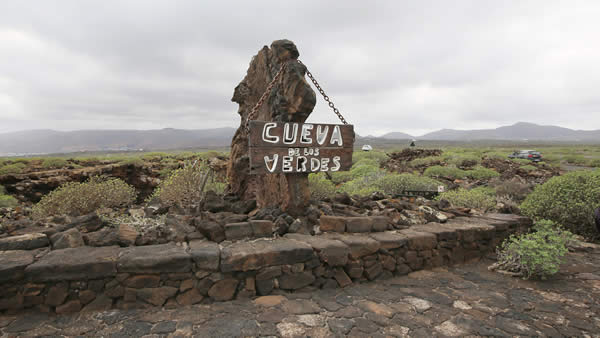
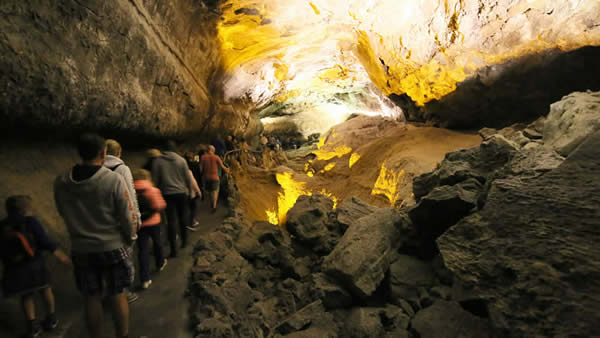
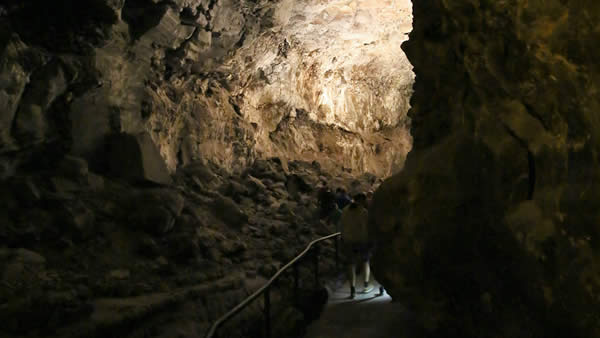
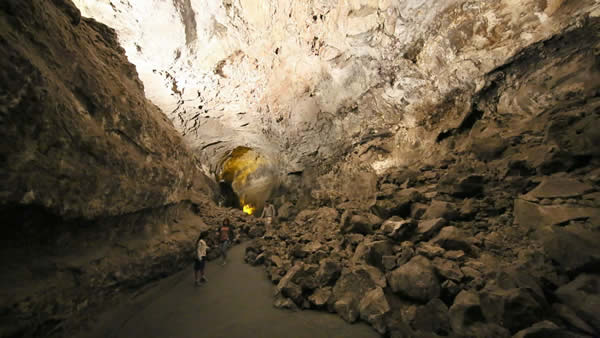
The cavern system originating from the Corona volcano leads through Jameos del Agua and finally ends up at the ocean. A jameo is a cave the roof of which was so thin that it came down when the lava had cooled down and erosion started to play a role.
Manrique has made something special with these enormous open caves: the underground lake is inhabited by small and blind albino lobsters leading to an open area resembling a swimming-pool of a breathtaking beauty. From there you can go to Casa de los Volcános, really recommended if you want to find out more about volcanism. Large scale models of each Canary island are very instructive, you can watch short movies and there are lots of interactive 'press-here-and-you-will-see' stations, some of which are a bit slow and have unfortunately not survived the attention of the younger part of the smartphone generation.
• Leave your swimming gear at home, it is forbidden to enter the water
• Also here, there is a audotorium with great acoustics; check when there are concerts.
• The second restaurant has a splendid location with a nice view; on Tuesdays and Saturdays open in the evening, proper clothing required
• Jameos del Agua also participates in the combined-tickets offer
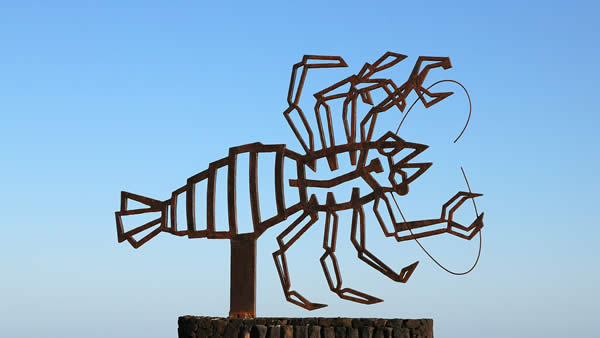
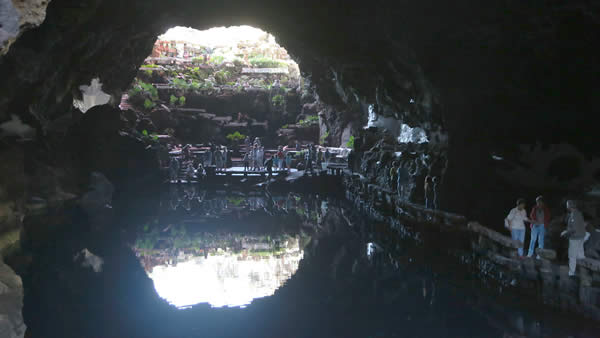
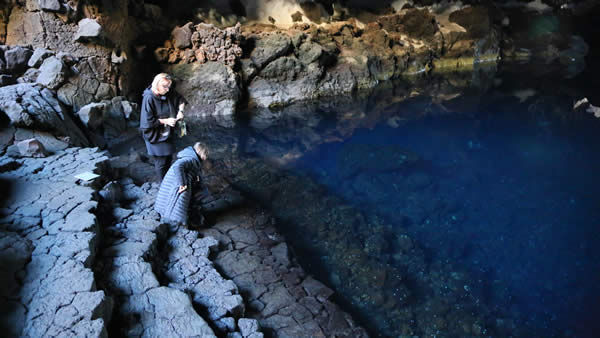
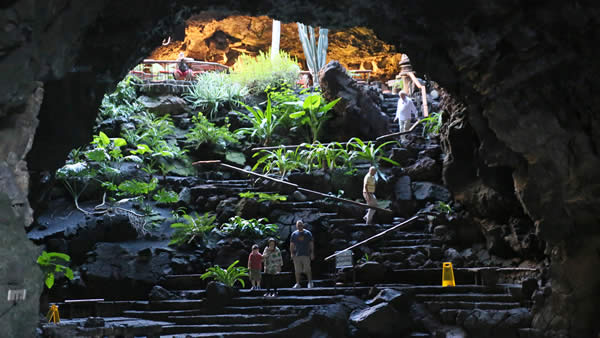
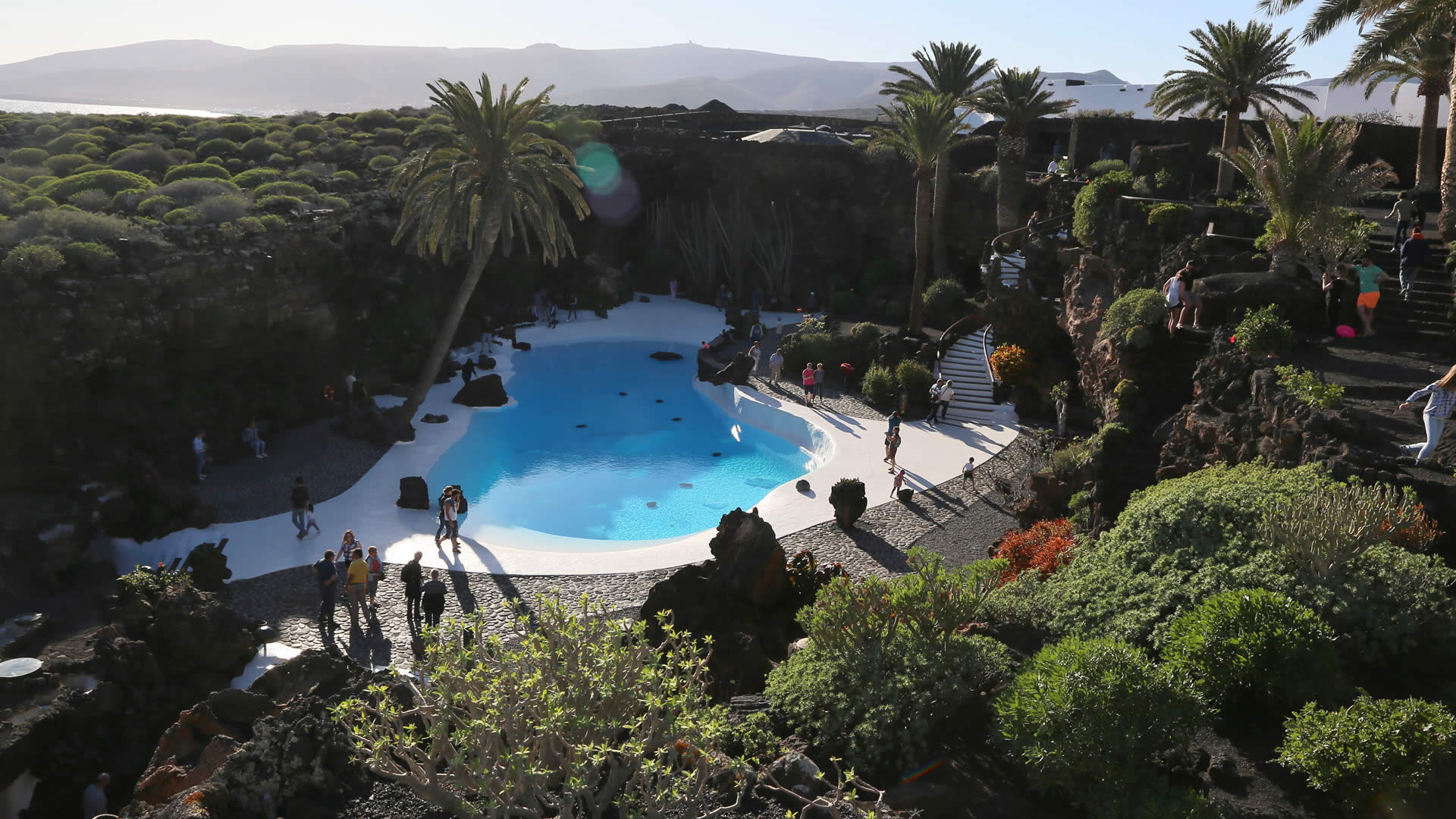
The Museo de Arte Contempráneo, International Contemporary Art Museum, is beautifully situated in the Castillo de San Jose, a fortress overlooking the port of Arrecife. In 1976 it was strikingly renovated with the help of César Manrique and it now contains the most important modern art collection of the Canary Islands, with works by, among others, Picasso, Miró, Tápies, Domínguez, Rivera and Millares.
A typical Manrique spiral staircase leads you to the downstairs restaurant that offers a truly overwhelming view thanks to the large, round windows. Also a Manrique trademark. You can have a lovely meal, between lunch and dinner it is closed, but just enjoying a coffee with a small bite is also highly recommended.
• The collection is of a high level and very diverse, so interesting for everyone
• It is small-scale, in three quarters of an hour you have seen everything
• Also for the MIAC you can make use a combined-tickets offer (go to one of the Tourist Centre Offices)
• Visit the website
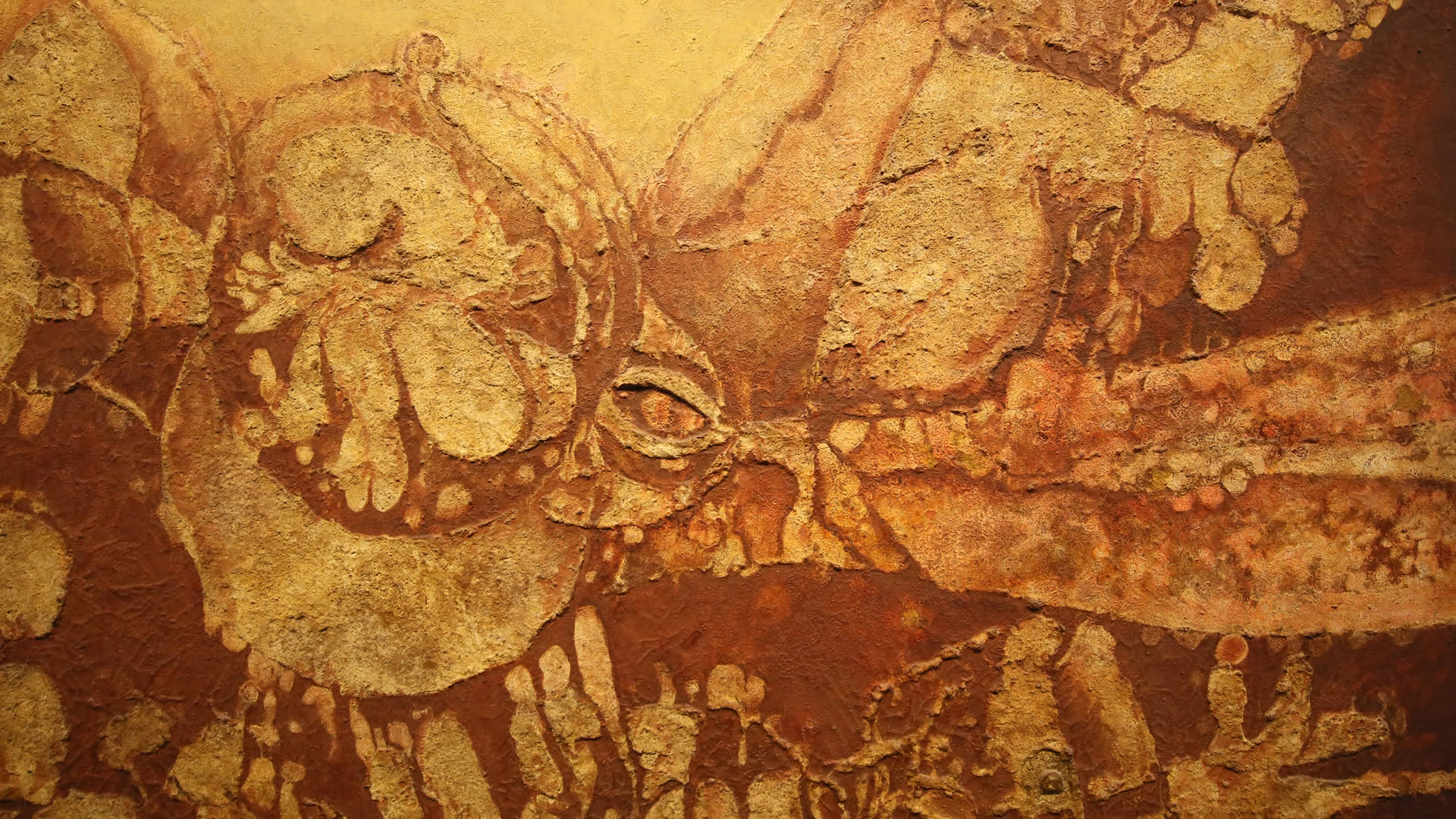
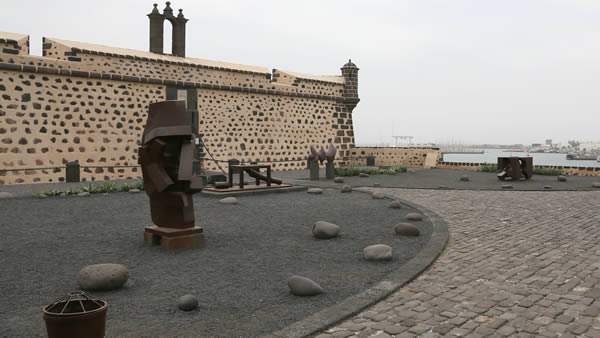
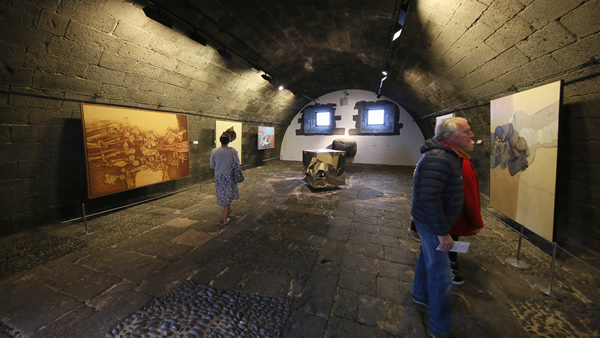
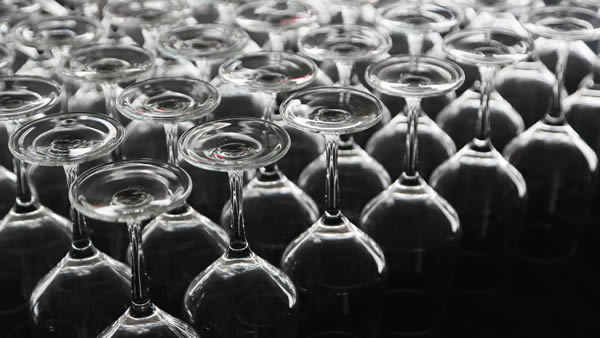
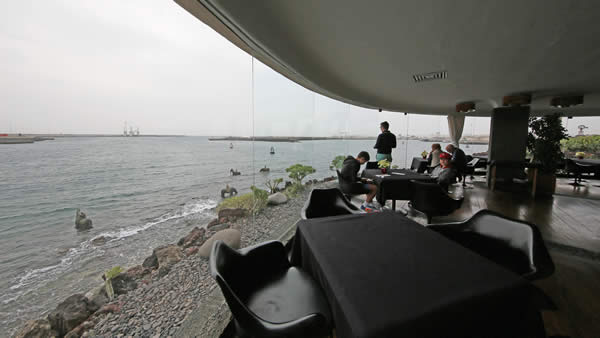
The Jardín de Cactus is a cactus garden on the island of Lanzarote in the Canary Islands. It is situated in the village of Guatiza, in a former quarry where volcanic sand was extracted to spread on cultivated areas to retain moisture. Prickly pears are grown in the area for the production of cochineal.
The cactus garden was created in 1991, the last project of César Manrique. The garden now has 4,500 examples of 450 species of cactus and succulents from North and South America, Madagascar, and other desert and arid areas. The garden is in the shape of a large amphitheatre, with the plants arranged in terraces. A restored windmill, once used in the production of gofio, stands at the highest point.
• This garden is really worth a visit
• The restaurant offers a nice view over the garden, the menu is suited for a simple lunch.
• Jardín de Cactus also participates in the combined-tickets offer
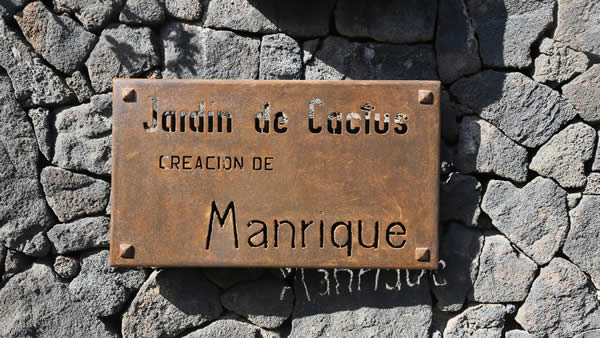
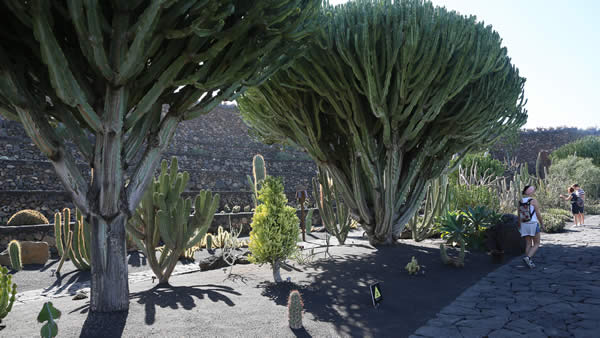
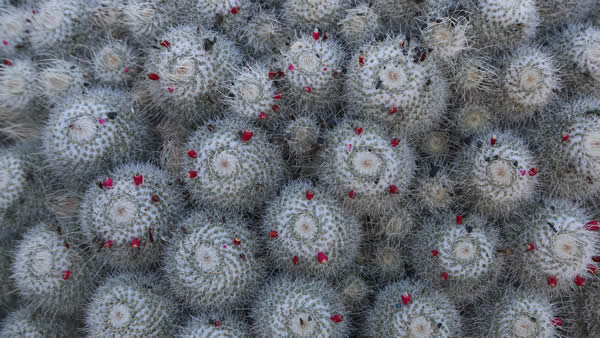
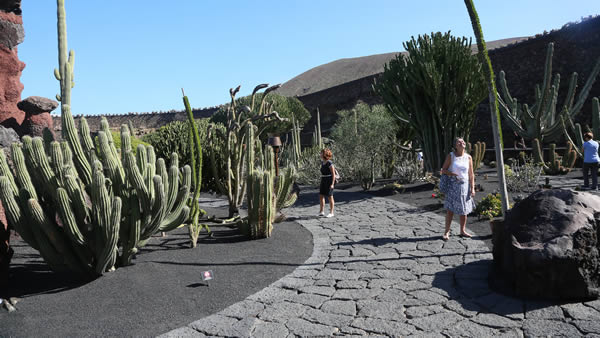
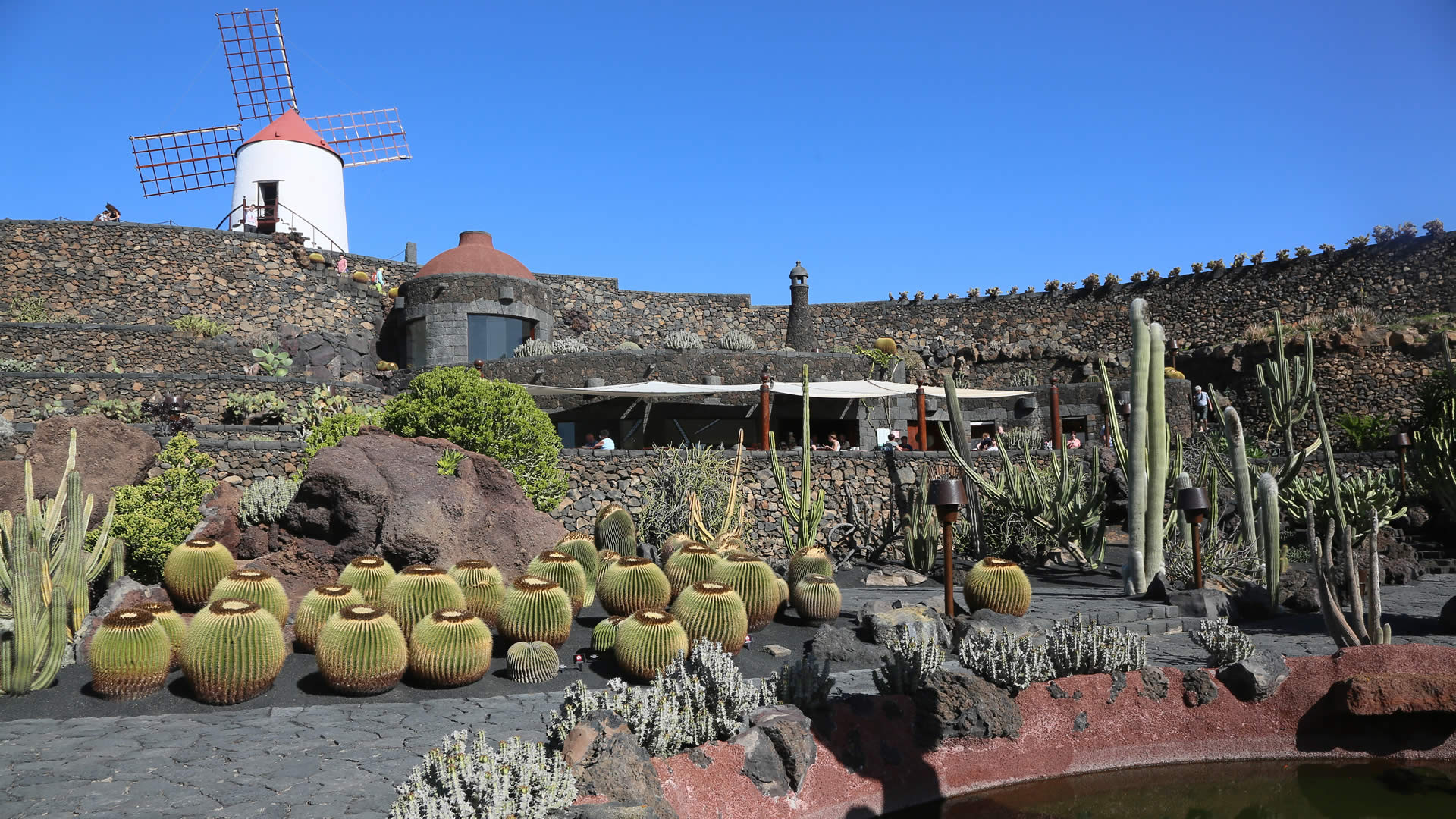
Without any doubt at all we can state this is Lanzarotes must-see, and really, we are not overdoing it at all, Timanfaya National Park is regarded as one of the most spectacular landscapes of our planet.
In a nutshell: between 1730 and 1736 a total of 26 volcans erupted. Lava covered the land, swallowed 11 villages on its way and created paths in every direction towards the ocean: Lanzarote had expanded by more than a quarter. Nobody was hurt, this type of volcano - called Hawaii volcano - starts announcing eruptions well ahead.
Every nature lover and photographer dreams of being able to walk about in this park, but that's not allowed. The area is too vulnerable. The easy way to get a really good look is to go to the park, buy a ticket which is inclusive of a 30-minute bus tour. The tour is breathtaking. If you are prepared to put in some more energy follow a walking-tour with a guide. Tip: book the latter at least of month ahead. Alternatively you can make a walk on your own from the visitors' centre at Mancha Blanca.
For those who prefer the touristical version you can climb on the back of a dromedary (although they are called camels) and let you lead through a part that is a little less interesting but still worthwhile.
Manriques influence: he designed the central building offering amenities such as restaurant, grill, shop and toilets. From the bus it looks like a spaceship ready to be launched within a few minutes.
• In winter there are more tourists than in summer
•Make sure you are at the entrance if the National Park at 08.30 hrs to avoid long queues and waiting-times ... or just arrive at 15.30 hrs. Discounts are granted because the grill where they show you how to prepare a chicken leg on volcanic heat has already been cleaned, the restaurant has closed and the dromedaries/camels have been led home (at that time of daty you see them leaving, see the picture)
• A day with solitary clouds and the sun peeking through all the time makes for constantly changing landscapes you will never forget
• Finding a seat on the right-hand side of the bus gives wide views
• The bus stops three times for pictures, but you have to remain in your seat
• Combined-tickets also apply to Timanfaya National Park
• Walk with an English-speaking guide from El Golfo, 6 kms, medium difficulty, 16-plus only, sturdy shoes
• Taking pictures: the bus window panes account for a lot of reflection. Make a 90-degree angle with the hood of your lens and the pane, pressing it against the window pane to avoid reflection and create more stability. Alternatively, same MO, take a black sweater or coat and fold it around your camera leaving the lens free. Also, a zoom or telephoto lens can come in quite handy when the bus has stopped.
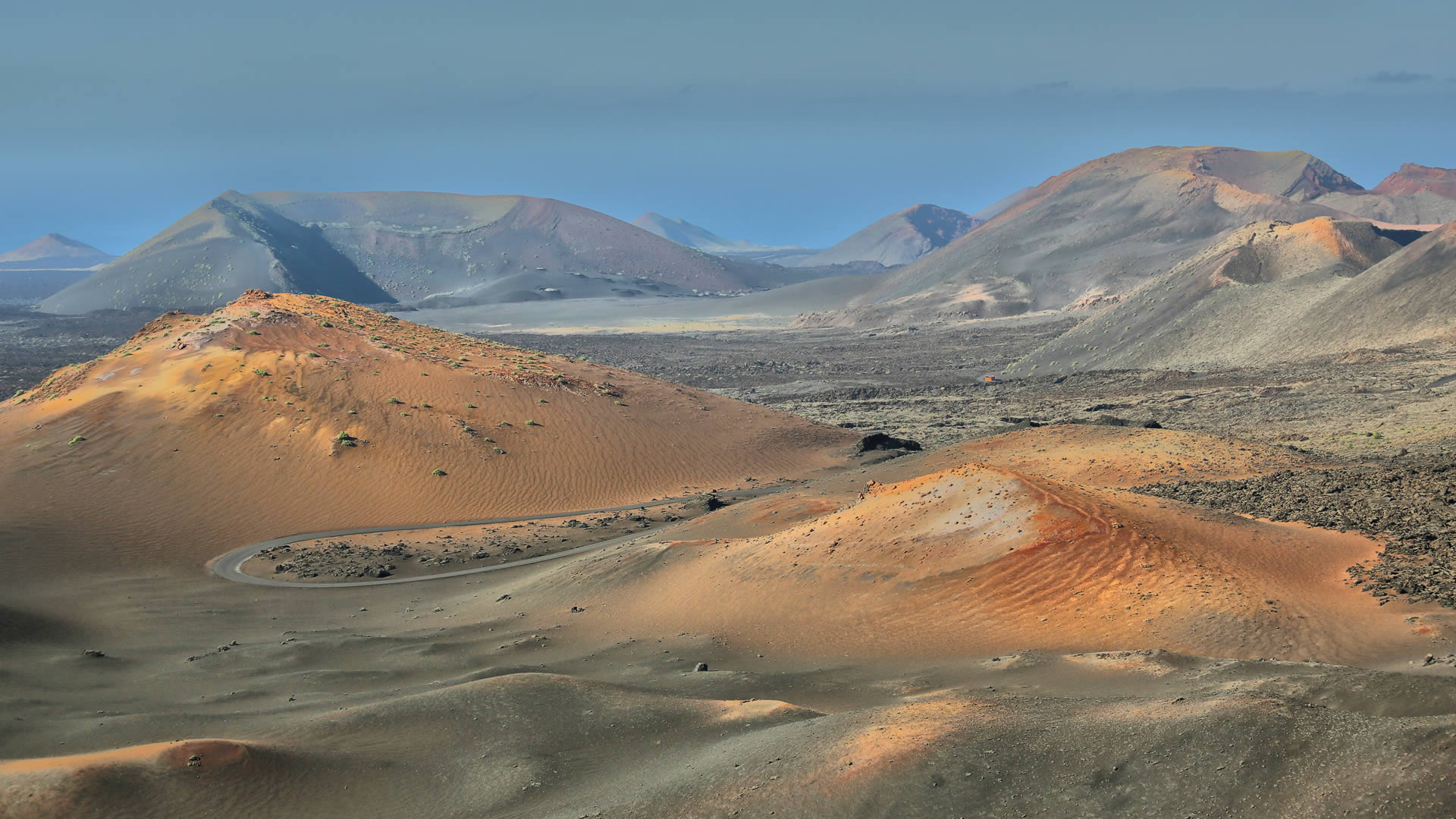
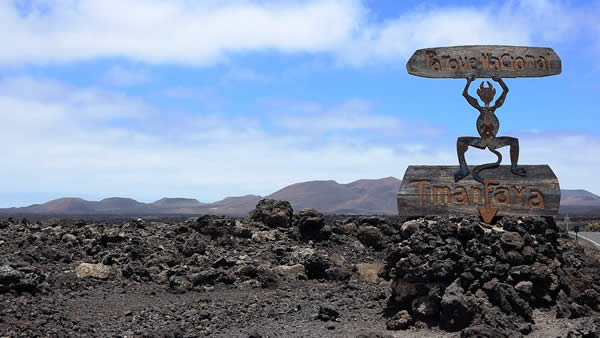

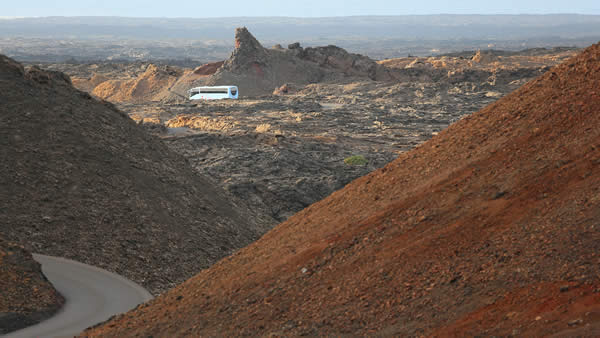
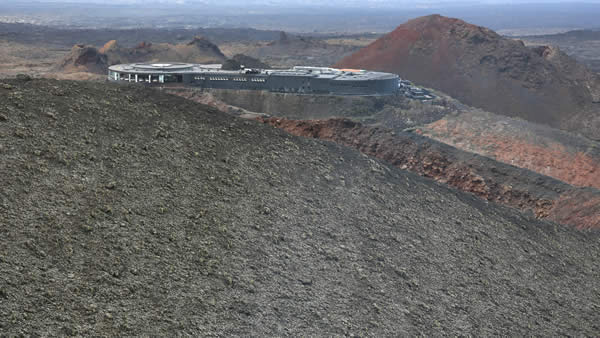
Once César Manrique's creations have inspired you, there will no doubt be a point when you want to know more about this man: what sort of house did he build for himself, where did het live, can we see his studio?
The Fundación César Manrique takes care of his legacy and has opened two houses where Manriqie lived: Tahíche, the Volvan House, is a showcase what you can do with a large track of 'worthless' lava land by creating above-ground and underground levels. You can see many examples of the art Manrque and his contemporaries such as Picasso left us behind, weheras Haría, the Palm House, is an inspiring view on how to create a living area in a subtropical surroundings: living, reading, sleeping, cooking and relaxing play a central role.
Manrique had his massive studio there, the picture he was working at is still lying on the floor - that's how he often painted the larger ones - and the book he was reading the very day he met his unexpected death, still lies open at the same page ...
• Tahíche is more like a museum than a house to live in, and it is a showcase of his creativity and vision
• You are not allowed to make photographs in the Palm House at Haría, unless you ask online for permission at least a month ahead
• For both houses combined-tickets can be bought
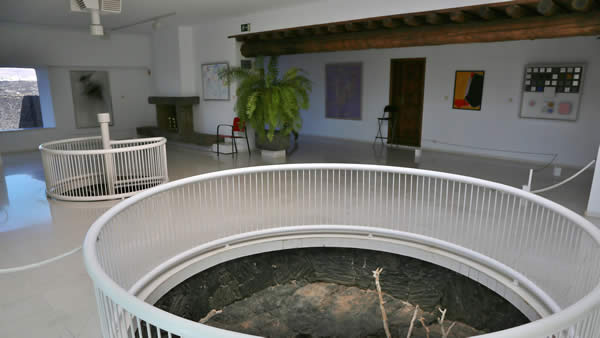

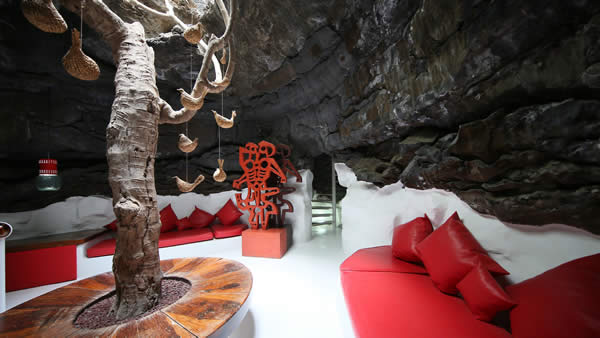
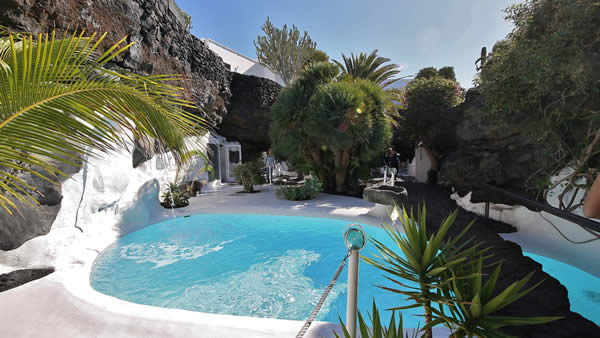
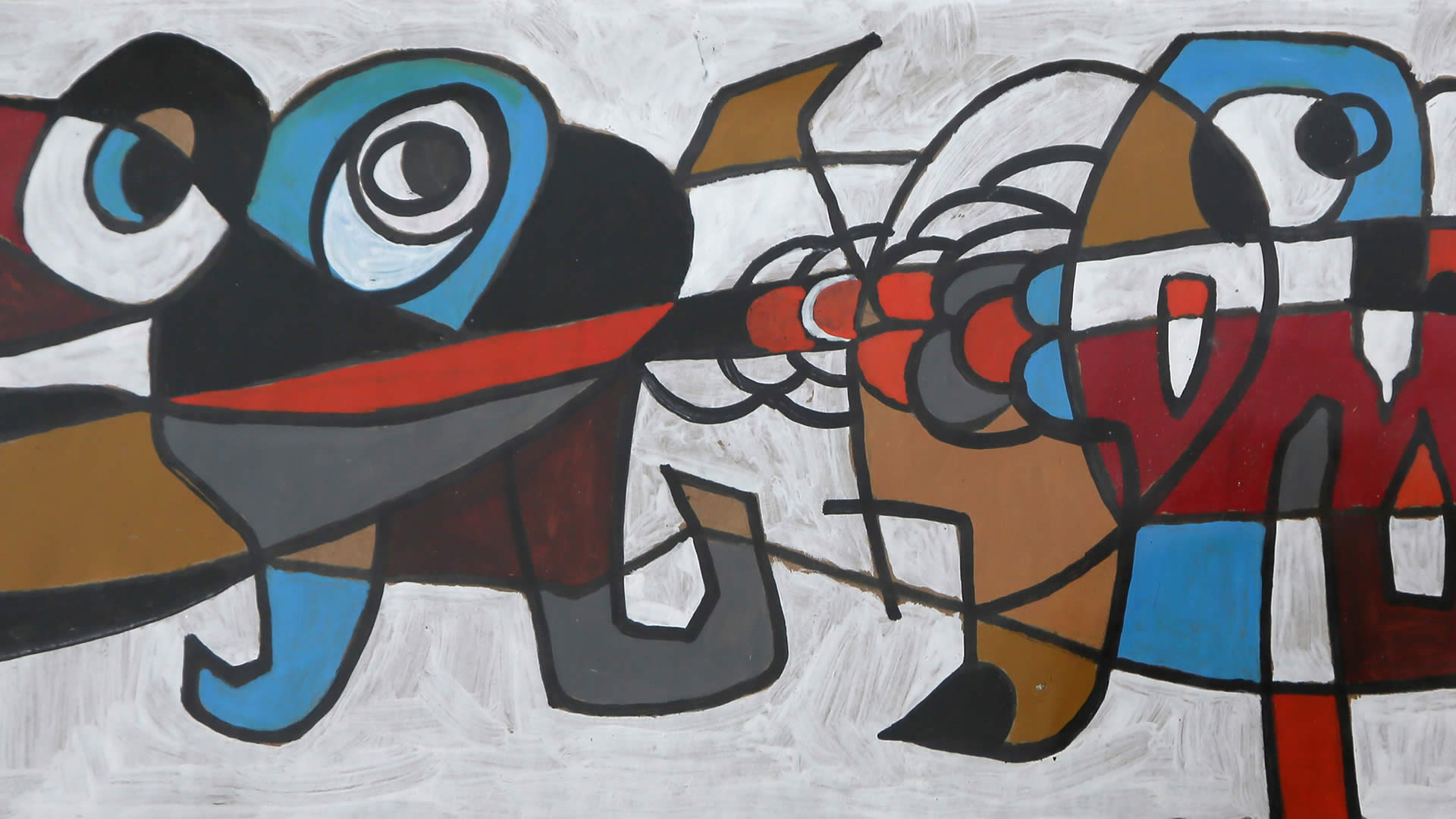
"It has been a wonderful week in the peaceful location of Finca Chafariz. As regulars on the island of Lanzarote we can assure this is one of the best places to explore the island. Further, it has been a pleasure to visit the best fish restaurant of Arrieta, for us an impoortant part of the stay!"
- Jannie & Anders, Denmark, March 2018 -